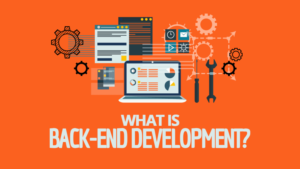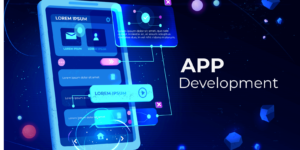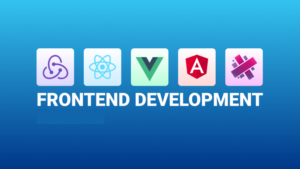Introduction
Full-stack development combines the best of both worlds: front-end and back-end development. As a full-stack developer, you’re a jack-of-all-trades, capable of creating complete web applications from user interfaces to server-side logic. If you’re passionate about building end-to-end solutions and want to broaden your skill set, this guide is your roadmap to becoming a proficient full-stack developer.
What is Full-Stack Development?
Full-stack development refers to the practice of working on both the front-end (user interface) and back-end (server, database, APIs) of an application.
Responsibilities of a Full-Stack Developer:
- Front-End: Design and implement responsive, interactive user interfaces.
- Back-End: Manage databases, write server-side logic, and handle application workflows.
- Integration: Connect the front-end with back-end systems via APIs.
Examples of Full-Stack Development in Action:
- Building a social media platform where users can post, comment, and like.
- Creating an e-commerce application with product catalogs, shopping carts, and payment processing.
- Developing dashboards for data visualization and analytics.
Why Choose Full-Stack Development?
- Versatility: Work across different parts of a project, making you invaluable to any team.
- High Demand: Companies prefer hiring developers who can handle both front-end and back-end tasks.
- Exciting Challenges: Solve complex problems and gain exposure to a wide range of technologies.
Industry Insights:
- Full-stack developers are among the most sought-after professionals, with salaries averaging $100,000 to $150,000 per year depending on experience and location.
- Popular job titles include Full-Stack Engineer, Web Developer, and Software Developer.
Key Skills for Full-Stack Developers
Front-End Development Skills:
- HTML/CSS: Create the structure and style of web pages.
- JavaScript: Add interactivity and functionality to websites.
- Frameworks: Learn React, Angular, or Vue.js for building modern front-end applications.
- Responsive Design: Use tools like CSS Grid, Flexbox, and media queries to make applications mobile-friendly.
Back-End Development Skills:
- Programming Languages: Learn Node.js, Python, Ruby, PHP, or Java for server-side development.
- Frameworks: Use Express.js (Node.js), Django (Python), or Spring Boot (Java).
- Databases: Work with relational databases like MySQL/PostgreSQL and NoSQL databases like MongoDB.
- API Development: Create RESTful APIs and explore GraphQL for data handling.
Additional Skills:
- Version Control: Git and GitHub for collaboration and code management.
- DevOps Basics: Learn CI/CD, Docker, and cloud services like AWS.
- Testing: Use tools like Jest, Mocha, and Postman for debugging and testing.
- Soft Skills: Strong communication and problem-solving abilities to work across teams.
How to Start Your Journey as a Full-Stack Developer?
1. Learn the Basics:
- Begin with HTML, CSS, and JavaScript to build static and dynamic web pages.
- Understand the client-server architecture.
2. Take Online Courses:
- The Odin Project – Covers full-stack development from front-end to back-end.
- CS50’s Web Programming with Python and JavaScript – Learn Django, SQL, and JavaScript.
- Full-Stack Developer Bootcamp on Udemy – Comprehensive, hands-on learning.
3. Build Real-World Projects:
- Personal Portfolio: Showcase your skills with a portfolio website.
- Blog Platform: Build a blog with a custom CMS.
- E-Commerce App: Develop an application with a product catalog, cart, and payment gateway.
4. Practice Frameworks and Libraries:
- Use React or Vue.js for front-end development.
- Learn back-end frameworks like Django, Express.js, or Laravel.
5. Explore Deployment and DevOps:
- Host projects on platforms like Heroku, AWS, or Vercel.
- Learn containerization with Docker and orchestration with Kubernetes.
A 9-Month Roadmap to Becoming a Full-Stack Developer
Month 1–3: Mastering Front-End Development
Goal: Build a strong foundation in front-end technologies and responsive design.
What to Learn:
- HTML5: Learn to structure web pages effectively.
- Semantic elements:
<header>,<article>,<footer>. - Forms: Input fields, validation.
- Semantic elements:
- CSS3: Style your web pages.
- Responsive design using Flexbox and Grid.
- Basic animations and transitions.
- JavaScript Basics: Add interactivity to your web pages.
- Variables, loops, functions, and DOM manipulation.
- Event handling and basic debugging.
Projects to Build:
- Personal Portfolio: Showcase your learning progress and future projects.
- Responsive Landing Page: Practice CSS Grid and Flexbox.
Tools to Use:
- Code Editors: Visual Studio Code.
- Browser Developer Tools: Inspect and debug HTML/CSS.
Month 4–5: Intermediate Front-End & Frameworks
Goal: Transition from basic front-end to modern frameworks and state management.
What to Learn:
- Advanced JavaScript:
- ES6+ features (arrow functions, promises, async/await).
- Fetch API for calling external data.
- Front-End Frameworks:
- Learn React: Components, props, state, hooks.
- Optional: Explore Vue.js or Angular.
- Version Control:
- Use Git and GitHub for managing your projects.
Projects to Build:
- Weather App: Fetch data from an external API (e.g., OpenWeatherMap).
- To-Do List: A dynamic app with React that manages tasks with state.
Tools to Use:
- Git/GitHub: Version control and project collaboration.
- Figma: Design mockups for UI/UX.
Month 6–7: Back-End Development
Goal: Learn server-side programming and database management.
What to Learn:
- Server-Side Programming:
- Pick a language (Node.js or Python).
- Frameworks: Express.js (Node.js) or Django (Python).
- Databases:
- Relational databases: MySQL or PostgreSQL.
- NoSQL databases: MongoDB.
- APIs:
- Build RESTful APIs.
- Optional: Explore GraphQL.
Projects to Build:
- Blog API: Create, read, update, and delete (CRUD) blog posts.
- Authentication System: Implement user registration and login with JSON Web Tokens (JWT).
Tools to Use:
- Postman: Test APIs.
- Database Management Tools: pgAdmin for PostgreSQL, Compass for MongoDB.
Month 8: Integrating Front-End and Back-End
Goal: Build full-stack applications that combine front-end and back-end functionality.
What to Learn:
- Front-End & Back-End Integration:
- Connect React front-end to a Node.js/Express.js back-end.
- Authentication & Authorization:
- Implement login systems and role-based access control.
- Deployment:
- Host applications on platforms like Heroku, Vercel, or AWS.
Projects to Build:
- E-Commerce App:
- Features: Product listing, cart, and checkout.
- Stack: React for UI, Node.js/Express.js for back-end, and MongoDB for the database.
- Social Media App:
- Features: User profiles, posts, and comments.
Tools to Use:
- Hosting Services: Heroku, Netlify, or AWS.
- CI/CD Tools: GitHub Actions for automated deployments.
Month 9: Advanced Topics and Portfolio Projects
Goal: Gain expertise in advanced topics and create standout portfolio projects.
What to Learn:
- Advanced Full-Stack Concepts:
- Real-time communication using WebSockets (e.g., with Socket.IO).
- Performance optimization: Caching with Redis.
- Cloud storage (e.g., AWS S3) for handling file uploads.
- Testing and Debugging:
- Write unit and integration tests using Jest or Mocha.
- DevOps Basics:
- Learn Docker for containerization.
- Set up CI/CD pipelines.
Portfolio Projects:
- Real-Time Chat Application:
- Features: Messaging, notifications.
- Stack: React, Node.js, MongoDB, and Socket.IO.
- Data Dashboard:
- Features: Data visualization using charts and graphs.
- Stack: React, Express.js, PostgreSQL.
Resources to Learn Full-Stack Development
Books:
- “Eloquent JavaScript” by Marijn Haverbeke: Master JavaScript fundamentals.
- “Flask Web Development” by Miguel Grinberg: Learn Python back-end development.
Free Learning Platforms:
- The Odin Project: Comprehensive full-stack curriculum.
- FreeCodeCamp: Hands-on projects for front-end and back-end.
YouTube Channels:
- Traversy Media: Tutorials on full-stack tools and frameworks.
- The Net Ninja: Focused tutorials on React, Node.js, and more.
Tools Every Full-Stack Developer Should Know
- Code Editors: Visual Studio Code.
- Debugging Tools: Chrome DevTools, Postman.
- Cloud Hosting: AWS, Heroku, Netlify.
- Database Tools: pgAdmin, MongoDB Compass.
Conclusion
Full-stack development is a rewarding career path that allows you to work across the entire application stack. By mastering both front-end and back-end skills, you can become a versatile developer capable of building complete solutions. Stay curious, practice regularly, and keep learning to excel in this ever-evolving field.
Ready to take the leap into full-stack development? Share your goals and questions in the comments below!




